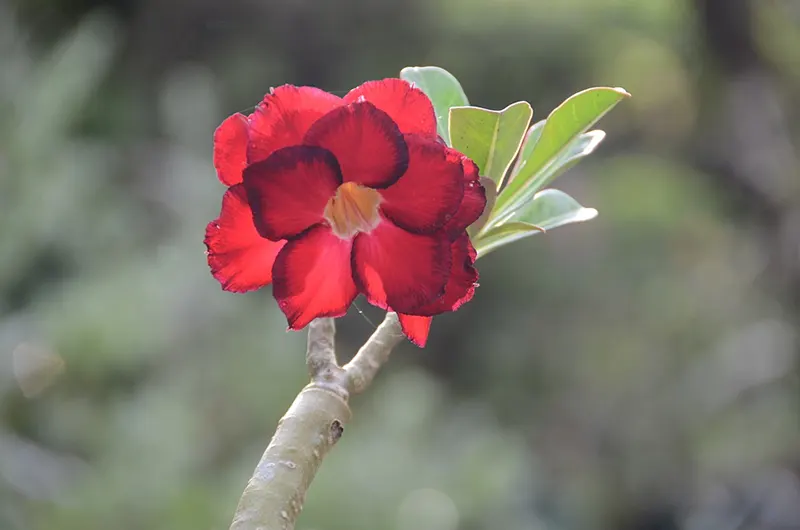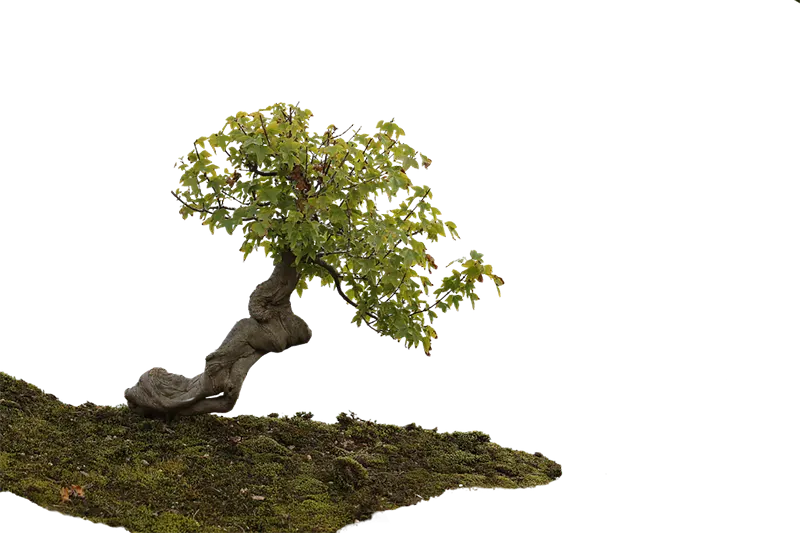What Is Bonsai Ramification and How To Do It?
Bonsai is the art of propagation and cultivation of small trees. It originated in China but has gained popularity in other parts of Asia and Europe since the 19th century. Today, many people are working on creating beautiful bonsai specimens (trees) at home or work.
It’s one thing to read about how to perform bonsai ramifications or learn how to preserve your newfound skill; it is another thing to do it. This article will give tips on what is involved in creating your bonsai and a guide on adequately doing so.
What Does Bonsai Ramification Mean?
Bonsai ramification is the method of growth that results in a plant’s branches growing out from the trunk and developing into multiple trunks, or even becoming separated from the main trunk altogether. Bonsai refers to any tree grown in an artificial environment, such as a pot or a display case. If you want your bonsai to grow this way, you’ll need to understand how it works.
Bonsai trees are grown in small pots and then pruned to make them look like miniature trees. The word bonsai means “treasure tree” in Japanese, and the practice began in Japan centuries ago. Bonsai trees are often used as ornamental plants but can also be used as indoor plants, especially young ones.
What Are the Important Features of Ramification?
Bonsai ramification is the process of pruning branches and roots to shape trees into bonsai. The main features of bonsai ramifications are:
- The removal of secondary growth occurs when a branch or root is removed from a tree.
- The shaping of the trunk by removing deadwood and adding light to the interior.
- The creation of new branches by selecting young shoots from existing ones.
Taper
Taper is an important bonsai ramification feature that affects how a tree grows and develops. The taper of a tree can be measured in two different ways: the first being the angle at which the trunk slopes and the second being the angle between the branches of a tree.
Internode
Internode keeps the tree from losing foliage by giving it a place to grow roots and leaves. The internode is also essential to the tree’s structure because it helps support its weight. The internode can be found in many different types of trees: cypress, maple, pine, and oak trees all have a unique type of internode. These trunks are often bent toward each other or run parallel to each other. Sometimes, they may even be twisted around one another at specific points!
What Is the Best Way for Bonsai Ramifications?
Bonsai ramification is the process in which a bonsai tree is trained to branch out from a single main trunk. This branching can be accomplished by training the tree to grow new branches from existing ones or by creating entirely new branches.
When you create bonsai ramifications, it’s essential to remember that this will be temporary: the branches will eventually die off if not regularly pruned. You want to create a healthy balance between the size of your bonsai tree and the amount of light it gets so that it doesn’t become too large or get too little light for its size.
You can achieve this balance in many different ways: for example, if you want your bonsai tree to have more leaves than branches, then you should trim back some of its leaves at least once per year to encourage new growth underneath them! Here’s what to keep in mind when performing bonsai ramifications.
1. Selecting the Right Tools
Beginners usually tend to grab the first thing they come across. This may not be the best approach to start with a plant in your garden. You should select high-quality tools that are designed explicitly for bonsai.
Scissors
Bonsai scissors are used to separate branches and trim the tree’s foliage. The primary function of a bonsai scissor is to keep the trunk clean and neat. Bonsai scissors are also used to remove dead leaves from the branches and twigs so they don’t get in the way of the new growth.
Pruning Shears
Pruning shears are a bonsai gardener’s best friend. They help you eliminate the deadwood, keep your plants healthy and vigorous, and keep branches from breaking off. They can also reduce the size of your trees by removing branches that have become too big for their root systems to support. This is especially helpful if you’re growing young trees or training new branches to grow in a different direction than their parent branch did. Pruning shears also provide an easy way to cut off branches as they grow out of shape or become too long for their good – which means less work for you and more time spent enjoying your bonsai!
Concave Branch Cutters
Concave branch cutters are important for bonsai enthusiasts who want to save their trees from the dreaded pruning knife. They allow you to make cuts on branches without actually cutting them all the way through so that you can keep your tree’s shape intact while still getting rid of dead wood and giving it a fresh new look.
These branch cutters come in many different sizes, shapes, and materials. You can use concave saws on wood, but wood-cutting shears are also designed explicitly for this purpose. You should also be able to find concave trimming knives made out of metal or plastic if you go with one of those options instead!
Copper Wires
A copper wire is used for various purposes, including wiring up your tree to the ground and supporting branches that need more structure. Copper wire is often combined with other elements of a bonsai’s design, such as wire supports or wood skewers.
Wire Pliers and Cutters
Wire pliers help you to hold the wire in place while cutting, and cutters help you to cut the wire more precisely. Pliers are typically made of steel and have one flat side and two round sides. One handle is curved, and the other is straight. They come in different sizes with different handles, so you’ll want to choose the right size for your project.
Cutters come in different shapes, but they all have a round head with a sharp edge on one side. Some cutters are made from metal and some from plastic, so you must choose one that matches your work (metal for metal wires or plastic for poly-wire).
Tweezers
Tweezers help you to remove branches from young trees so they can grow straight and strong. This is especially important in younger trees, which tend to have more branching than older trees. It also helps you to remove dead or dying branches so they don’t become litter or attract insects that can damage your bonsai.
Tweezers also help you to apply fertilizer and water to your bonsai roots when you’re watering them. The tweezers will make it easier to get a good amount of fertilizer or water into the root zone without wasting any on other parts of the tree where there’s no need (like leaves!)
Spades
A spade is used to dig and loosen soil for planting and remove deadwood and branches. It is also handy for cutting trees in half or chopping off branches.
Root Hooks
One thing that all bonsai owners struggle with is how to care for their trees properly. You want your tree to be healthy, but sometimes you don’t know how to do that. That’s where root hooks come in. These hooks help eliminate unwanted roots, harming your plant’s health.
Root hooks are different from regular garden hooks because they have curved ends instead of straight ones. The curved ends allow you to push deeper into the soil without damaging the roots or plants around them and digging out ground anchor points for new roots to establish themselves properly.
2. Pruning
Pruning is the next stage for bonsai ramifications. When you prune your bonsai, you are removing dead or dying branches, which can affect the shape of your bonsai. If you don’t prune your bonsai regularly, it can become overgrown and unbalanced.
You should prune your bonsai in the spring and fall. During these seasons, the plant is actively growing, so it will be easier to see where the dead or dying branches are on your plant. You should also remove any branches that are broken or damaged because they are more likely to cause problems later on.
What Is the Best Time to Prune a Bonsai?
The best time to prune bonsais is when they are dormant, meaning they’re not actively growing then. Dormancy is different for each species, but it’s usually triggered by colder weather or other environmental stressors. If you’re having trouble determining when to prune your bonsai, try looking at its leaves and branches. If they’re fallow and brown, it’s probably time to give them some TLC!
Which Branch Do You Select When Pruning a Bonsai?
When pruning a bonsai, you must decide which branch will be left behind. That branch can be either the tree’s base or an extension of the trunk. The base is the portion of the tree that has been rooted in the soil and holds up the entire structure. The trunk of a bonsai tree is most often chosen as this branching point, as it has more strength than any other part of the tree.
If you are going to leave in a branch that connects with a trunk, then it should be done so in such a way that it will integrate with its surroundings and not look out of place. This can be accomplished by using grafting techniques or by attaching pieces of bark or wood onto their ends so that they blend in with their surroundings.
Why Is It Important to Prune Unwanted Branches?
Pruning unwanted branches is important because it allows your tree to continue to thrive. Unwanted branches will cause other branches to have more weight, which can cause the branch to break or be damaged. If you are trying to make your tree look nice, you must keep unwanted branches from growing so that they will maintain their shape and appearance.
What Are the Steps to Prune a Bonsai?
Pruning a bonsai is a little bit like trimming your hair. It’s not about the individual hairs you’re cutting but how you’re making them fit together. There are two main types of pruning: the first is called “make thin” or “general pruning,” and it involves growing your bonsai in a way that allows it to spread out naturally.
The second type of pruning is called “make strong.” This pruning often involves removing dead limbs or branches from your bonsai so it can remain stable. The best way to determine whether you need to make it thin or strong is by looking at the health of your plant and how much light it receives each day. If one type of pruning would help strengthen your plant while another would make it weaker, choose whichever seems more appropriate for your situation!
What Is Defoliation in Bonsai?
Defoliation is the process of removing leaves from a tree. This technique can be used when creating bonsai or even for other purposes. This can be done in many ways, but the most common way is by pruning off all the leaves from the tree’s branches. This is typically done when you are training your bonsai to grow into the shape you want. The idea is to remove anything obstructing growth or creating dead space in your bonsai.
What Does Bonsai Pinching Mean?
Bonsai pinching is an art form that involves pruning trees, shrubs, and other plants. When you pinch a bonsai plant, you remove branches so the plant can grow back with a more symmetrical shape. This helps to encourage the formation of new roots and leaves while creating a more aesthetically pleasing shape. It’s also essential to pinch your bonsai to prevent it from losing its shape as it grows larger.
Why Is Bonsai Pinching Done?
Bonsai pinching is a method of training and controlling the growth of bonsai plants. This can be done to promote the desired shape, or it can be used to correct mistakes in the plant’s growth. Bonsai pinching can be done any time during the growing season, but it is usually done in late spring or early summer after new shoots have emerged on the tree.
Once bonsai pinching has been attempted, it is essential to continue pinching until all branches are in equilibrium. The goal is to create a balanced shape that resembles an actual tree. A pinch should never be pulled all the way through, as this will cause damage to the plant and make it difficult for it to recover from future pruning attempts.
3. Wiring
The next step is wiring a bonsai. When wiring, it is essential to remember that wiring is not just about creating the shape of a tree. It is also about creating the shape of the tree’s leaves and branches. To be effective, you should ensure that the wires don’t go too far out from their position on the tree. If you do this, then there will be no way for them to create branches or leaves. You should also ensure that you’re using wire of appropriate diameter for your bonsai tree.
Conclusion
Other bonsai techniques also help encourage ramification in the trunk, such as pruning and twisting. These techniques can be combined to create unique effects and result in a more robust tree overall. Keep in mind that this is not the only way to create ramifications. Ultimately, practitioners will find a happy medium between techniques and methods that works best for each tree.







